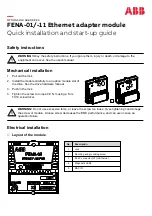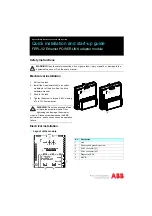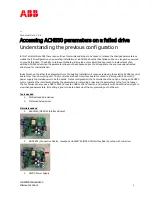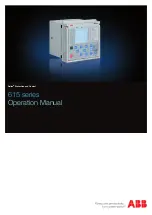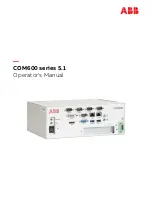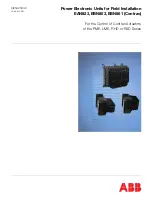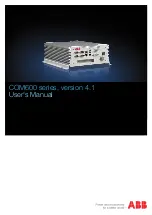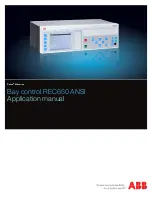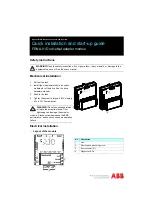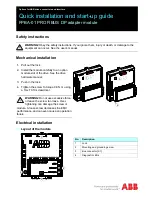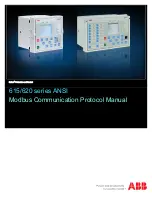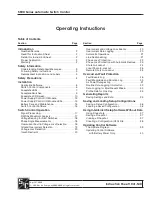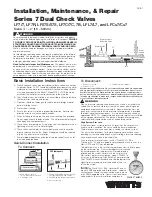
7
8
3.0 CONFIGURATION
The Model IM1/F-128K is equipped with four DIP switches that allow con-
figuration of the unit to match your application. These DIP switches are located
on the top side of the module. Refer to Figure 3 below for a description of the
DIP switches location on the module and a summary table detailing their set-
tings.
3.1 Switch Set S1
The following table defines the possible configurations of the
IM1/F-128K using the configuration DIP switch, S1. Factory defaults
are in bold-face.
Switch
On
Off
S1-1
Modem Timed
Network Timed
S1-2
Not Used
Not Used
S1-3
Clear Channel Mode
Not Used
S1-4
Normal Operation
Reserved for Factory
Use
4.0 INSTALLATION
Once the Model IM1/F-128K is properly configured, it is ready to install
into Patton Model 1090, 1092, 1094A and 1095.. This section tells you how to
properly connect the Model IM1/F-128K.
4.1 HOW TO INSTALL THE NEW QUICKCONNECT
TM
MODULE
The Quick connect module has a 50 pin card edge connector on one side
and an RJ-45 connector on the other The following instructions show you
how a QuickConnect
TM
module plugs into the back of a Patton
Electronics Model 1090,1092, 1094A or 1095.
1.
Make sure the host modem power switch is off. Leave the
power cord plugged into a grounded outlet to keep the unit
grounded. The telephone cord must remain disconnected
from the telecommunications system until the card has been
installed within the host.
2.
Hold the module with the faceplate toward you and align the
module with the guide slots in the rear panel of the Model
1090,1092, 1094A or 1095.
3.
While keeping the module’s faceplate parallel with the Modem
rear panel, slide the module straight in so that the card edge
contacts line up with the socket inside the chassis. Refer to
Figure 4 below.
Figure 3: Top Side of IM 1/F-128K, Dip Switch Location
4 3 2 1
On
Off
0 OFF
1 ON
Line
Interface Port
Figure 4. Installation of Model IM 1/F-128K Plug-in Serial Interface Module
NOTE:
Switches S1-3 and S1-4 must be ON.
Safety Precautions
The telecommunications interface is intended to be connected
to Telecommunication Network Voltage (TNV) circuits that may
carry dangerous voltages. Therefore, for safety measures, it is
imperative that the following instructions be followed exactly.








